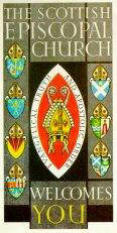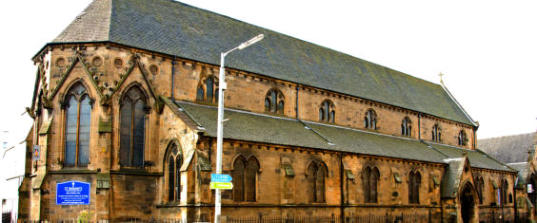
© St Ninians Episcopal Church, Glasgow which is a charity registered under no.SC010966
About us

Central to life at St Ninian’s is our Sunday worship
but there is also a wide variety of activities based
here - from the spiritual to the secular:
Come inside to find out more about us.

St. Ninian’s is heir to a proud and rich history. The building is a very fine
example of high Gothic Victorian splendour containing many architectural
details. Its history lends itself to a rather more formal approach to worship.
However, buildings, no matter how grand, do not make the Church. People
make the Church. The congregation understands the needs of a new world. St
Ninian’s allows for the best of the long traditions of Christian service combined
with the vibrancy of new ways of praise and service.
St Ninian’s is part of the Episcopalian tradition in Scotland. The Scottish
Episcopal Church traces its history to the Scottish Reformation. Scotland
followed a different path from England. Long after the position changed in
England, the Roman Catholic Church retained its pre-eminent position in
Scotland up to the deposing of Mary Queen of Scots in 1567.
The Bishops and Archbishops of Scotland held powerful positions and they
attempted to revive Catholicism before and during Mary’s reign. Even after the departure of Mary there was no large scale
embrace of Presbyterianism but eventually Catholicism weakened and in 1567 Roman Catholic forms of worship were
abolished. However, that did not mean that Bishops disappeared.
A unique dual approach to the role of bishop and “minister” (in the way that word is now used to describe the clergy of the
Church of Scotland) existed at that time. Not every priest or Bishop had gone into exile and many remained in post, albeit
“reformed”.
The Church at the point in Scotland could be described as “Episcopalian- Presbyterian”. Things continued in a sort of
balance until the attempts of King Charles to impose English ways of worship on the Scots who in 1688 revolted and
declared that the only Church government that was lawful in Scotland was Presbyterian and the Episcopalians were
declared illegal and were driven underground until, eventually, all the anti-Episcopalian legislation was repealed in 1792. In
modern times Scotland is divided into seven geographical areas known as diocese (the seven are: Moray, Ross & Caithness;
Argyll & The Isles; Aberdeen & Orkney; St Andrews, Dunkeld & Dunblane; Brechin; Edinburgh; and, Glasgow & Galloway).
Each diocese has a Diocesan Bishop who exercises spiritual power in the diocese as the spiritual leader of the clergy and
congregations in the diocese. The seven bishops elect one of their number to be “The Primus” (from the latin phrase primus
inter pares, meaning “first amongst equals”) who represents the whole Scottish Episcopal Church to the world.
Find out more about us and the Scottish Episcopal Church with these links:
The Diocese of Glasgow and Galloway
The Scottish Episcopal Church website
A History of the Scottish Episcopal Church by Gerald Stranraer-Mull.


















